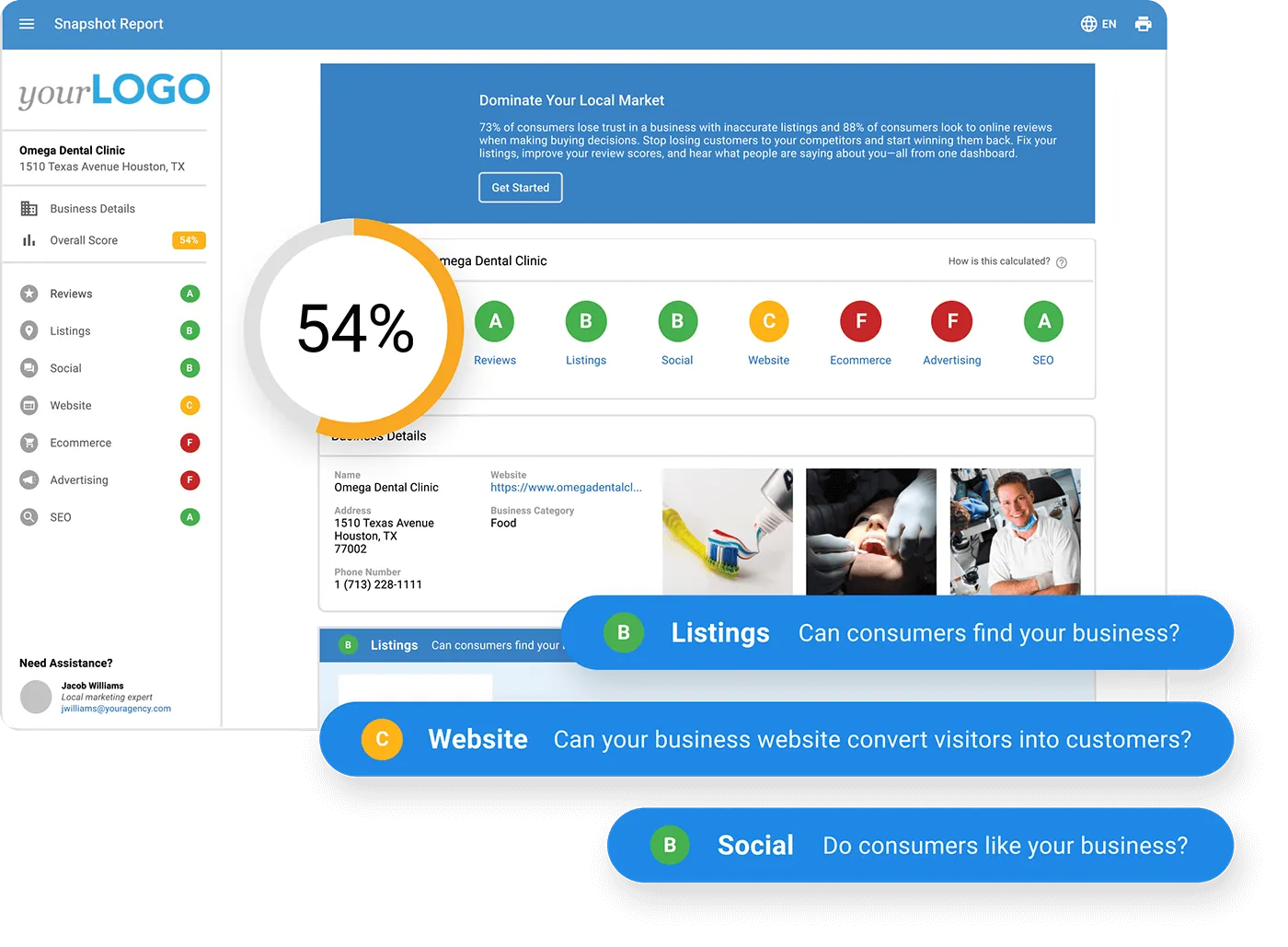A successful campaign has many moving parts, from goal-setting to crafting a perfect offer, acing your landing pages, promoting across multiple channels, and lead nurturing.
In this blog post, we’ll cover the A-Z of lead generation campaign strategy, so you can grow quickly, sustainably, and with less effort.
Send highly personalized automated campaigns that turn heads
Understanding Lead Generation Basics
Before digging into the specifics of a winning lead gen campaign, let’s review the basics of lead generation and why it matters for ambitious agencies.
What’s a Lead?
In simple terms, a lead is a prospective customer for your business. They’re part of your target audience, and by using different lead sources and online marketing strategies to get in front of them, you can get their contact information for further email marketing efforts. Getting a lead’s information is known as lead capture.
A qualified lead has been vetted in some way, such as through a phone call with your agency or completion of a questionnaire, and determined to be a good fit for your agency and more likely to convert. For example, this can be based on their alignment with your offerings, interest level, or decision-making power. Ranking leads by lead quality makes it easier for your team to focus their efforts where they’re most likely to drive results for your business.
CRM Lead Generation
Using a customer relationship management (CRM) system for lead generation and management is critical to running your lead generation campaigns at scale. This serves as a lead generation database where you can gather all leads as they sign up, monitor communications and other data, rank them by priority, and continue the relationship after conversion.
Content Marketing Strategy in Lead Campaigns
While offline methods can be a great addition to your lead campaign, most of your lead generation funnel will be digital. Content marketing lead generation is a very effective way to drive traffic to your landing pages and capture leads.
Using a content calendar is one of the best ways to organize your content marketing strategy, enabling you to stay on top of content production and significantly boost your organic lead generation.
Components of a Lead Generation Campaign
Whether you’re starting a new agency or have been in business for a while, you service a broad range of clients, or focus on a narrow niche, the basic ingredients of the best lead gen campaigns are the same. Consider how you’ll address each component in your lead generation efforts.
1. Clear Goals and Objectives
Your lead generation goals will vary depending on factors like budget, current business size, and capacity. Understanding your circumstances and setting ambitious but realistic goals will help you get the most out of your efforts.
For example, instead of just saying your goal is to get more leads for your digital agency, consider more specific goals like:
- Increase sales-qualified leads by 20% by the end of this quarter
- Test 5 new lead generation landing pages per quarter to reduce our cost per lead
- Double our organic leads through SEO lead generation by the end of the year
As part of this step, you should also define your target audience. Who are they, what do they care about, and how can you meet their needs?
2. Targeted Content and Offers
Once you’re clear on your goals, you can start planning your path to reach them.
Content marketing is at the heart of all the best lead gen campaigns since it’s a component of email lead generation, social media, SEO campaigns, pay-per-click (PPC) ads, and beyond. All of these require high-quality content aimed at your target audience to be successful. Your lead generation website needs high-value content to draw visitors and capture leads.
In addition to the content you use to drive traffic to your lead generation website, you’ll need valuable gated content to offer in exchange for email addresses. This should be unique and compelling enough to motivate people to sign up for your email list. Consider content like webinar recordings, SEO checklists, ebooks, or anything else of particular interest to your target audience.
3. Optimized Landing Pages
Before moving forward with CRM lead generation and nurturing efforts, you need to capture email addresses. This happens on your optimized landing pages.
Plan to continuously test and refine these, since it’s the only way to discover which layouts, colors, and calls to action (CTAs) drive the most conversions for your audience.
The anatomy of a landing page typically includes:
- Attention-grabbing headlines
- Clear, easy-to-understand, and keyword-optimized copy
- A compelling lead magnet offer
- A simple form to collect email addresses and any other basic data
- A CTA inviting visitors to take action
4. Multichannel Promotion
Today’s lead generation campaigns are omnichannel, using tools like email marketing, social media, PPC ads, and SEO to generate leads. For growing agencies, lead generation outsourcing can help manage multiple channels.
Keeping track of lead generation metrics by channel is important: this helps you see which sources deliver the most leads or the most value, so you can focus your budget where it makes the biggest impact for your agency.
AI is shaking up the lead gen world with more channels and tools to grow your business—check out this video with insights on tripling your leads instantly with AI lead capture tools:
5. Lead Nurturing and Follow-Up
Once a lead is in your CRM or lead generation tool database, nurturing and follow-up become critical.
The goal at this stage is to help leads move through your sales funnel quickly, so they don’t become stale—disinterested or disengaged. Automated email drip campaigns are a powerful tool for hands-off lead nurturing, but for more high-value prospects, a good lead generation best practice is to have your sales team get involved with them more directly.
Tip: Download our ready-to-use email templates to reengage old leads.
Implementing a Successful Lead Generation Campaign
In this next section, we’ll share some guidance for how to implement each element of a lead generation campaign discussed above. Whether you’re working on lead generation vs. demand generation, the tips here apply equally to both kinds of campaigns.
Selecting Lead Generation Tools
Lead gen campaigns are complex, but the right tools make the job of managing them much easier. You don’t need every shiny new software under the sun, but you do need tools that align with your business goals and are easy for your team to use and understand.
Here’s an overview of some common lead generation tools:
- Landing page builders: Tools like Website Pro and Instapage enable you to quickly create on-brand, easy-to-navigate, and high-converting landing pages. Thanks to their drag-and-drop functionality, you don’t need coding prowess to create your lead generation landing pages. Look for a builder with built-in A/B testing to make optimization easier.
- Lead capture forms and email marketing platforms: Forms forms can be embedded on your landing pages and are necessary to collect lead contact information. Your email marketing platform should have an easily embeddable form builder, or you can use a tool like Ninja Forms and link it to an email platform such as MailChimp.
- Lead management CRMs: The hub of your lead generation campaign strategy, a CRM is essential. Vendasta, HubSpot, and Salesforce are popular options. Customer Relationship Management (CRM) systems are essential for managing and nurturing leads. They allow you to track interactions, segment your leads, and automate follow-up processes.
Vendasta’s CRM software streamlines your team’s pipeline by helping you find and nurture leads with intent, move them through the funnel, prioritize the right opportunities, and accelerate your company’s growth. 
Evaluating Lead Generation Tools
When choosing your tools, follow these tips to evaluate them:
- Choose an option that fits within your budget—you may not need the fanciest, most expensive option on the market.
- Look for robust integrations, especially with tools you already use.
- Prioritize ease of use and reporting. The best tool is the one your team can actually use and gain data from.
- Consider your audience. Are there tools they’re already comfortable with? If so, consider using those.
Aligning Campaign Elements
Prospects may interact with your brand at many different touch points through your lead generation campaign before signing up, so it’s important to give them a cohesive, on-brand experience.
This means your content strategy should use consistent branding, messaging, and CTAs across all touchpoints. Also, make sure all your landing pages and content are mobile-responsive, giving users a great experience no matter what device they’re on.
Tracking Performance
Whether you’re running a local lead generation campaign or a global campaign, performance tracking is non-negotiable. Otherwise, it’s easy to waste money on ineffective strategies.
To do this, set benchmarks and goals for each lead generation metric such as total leads captured, cost per lead, cost per conversion, and value of conversion. Review how each campaign or lead source performs for these key metrics.
Focus your budget on high-performing channels and content, continuously testing elements like lead magnets, CTAs, and designs to iteratively optimize your campaigns.
Lead Nurturing and Follow-Up
Lead nurturing keeps your leads engaged and moves them through your sales funnel efficiently. To ace this part of your lead gen campaign, follow these tips:
- Segment your leads: dividing audiences based on demographics, interests, or stage in the buying process helps you deliver more targeted communications
- Focus on value: Your content should be valuable at every stage of your funnel. From personalized recommendations to free demo sessions, consider what leads need at each stage.
- Automation is your friend: Use available tools to put as much lead nurturing as possible on auto-pilot.
- Ensure your team is aligned: Sales and marketing teams should be on the same page about follow-up processes and responsibilities. Using a CRM is one of the best ways to do this.


